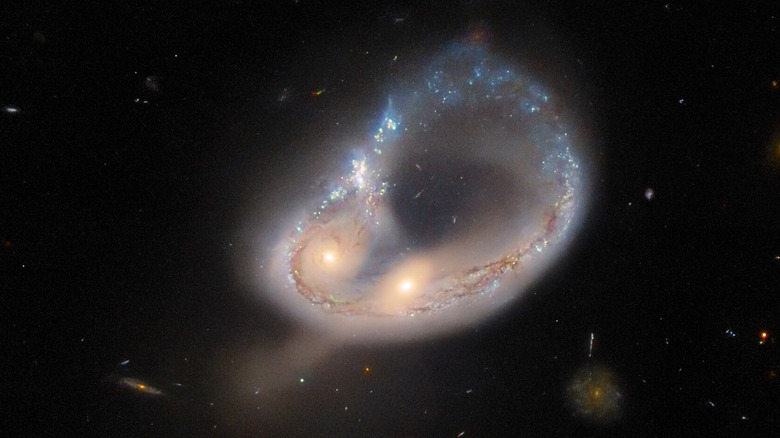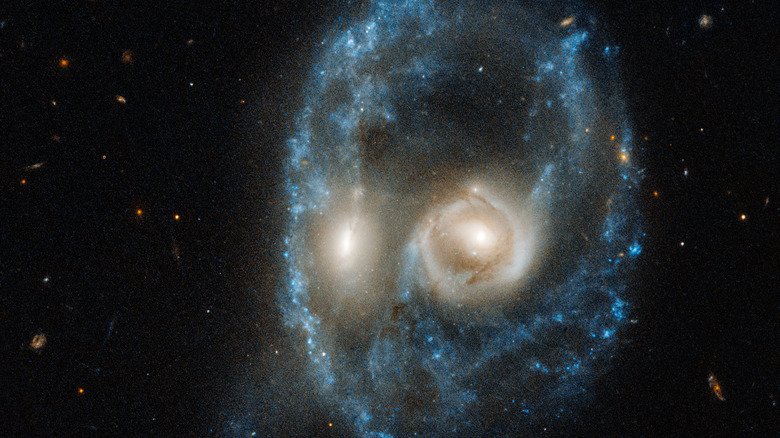Hubble Snaps Stunning Pictures Of Colliding Galaxies
Over an illustrious career stretching more than three decades, the Hubble Space Telescope has captured its fair share of cosmic wonders. Even now that all eyes are on the James Webb Space Telescope, Hubble continues to pull up stunning shots from the deep space. The latest snapshot sheds light on a galactic merger event in the Arp-Madore Catalogue of Southern Peculiar Galaxies and Associations.
Located in the Eridanus constellation, some 670 million light years away, Hubble's latest photo captured a galactic duo known as Arp-Madore 417-391 undergoing a collision event. But this is not the first time that the Hubble has turned its attention towards the Arp Madore region and come out with eye-catching discoveries.
Back in 2019, the telescope, named after astronomer Edwin Hubble, captured another breathtaking galactic merger happening some 704 million light-years from Earth. Catalogued as Arp-Madore 2026-424 (AM 2026-424), an event involving two galaxies, which looked like a skull with two glowing eyes. Just over a month ago, Hubble spotted another pair of galaxies in the Arp-Madore backyard, engaged in a slow dance, distorting and warping each others' shapes.
A special cosmic dance creating a rare shape
In its latest exploratory hunt covering the Arp-Madore territory, the Hubble telescope found something remarkable in the Arp-Madore 417-391 collision event. What is truly noteworthy is the intensity of the galactic interaction and the strong gravitational forces at play here. The pair of galaxies have contorted each other, a forming a ring-like structure, while their cores sit side by side. Personally, I think the cosmic duo looks more like a pair of wireless over-the-ear headphones like Sony's acclaimed WH-1000 XM4 cans.
The formation of ring-like structures at a galactic scale, especially in the events of merger between two galaxies, is quite rare. According to estimates, there are only a few hundred documented in Earth's cosmic neighborhood. A ring formation at such a massive scale is nothing short of a chance event, because the interacting galaxies have to collide at just the right angle and orientation to form such a structure (via LiveScience).
The ring's outline is usually made up of young blue stars, serving somewhat like an elongated genesis chamber of stars. However, rings generated from galactic collisions are rather short-lived (on a cosmic time scale, that is), and usually lose their distinct structure a few hundred million years.

